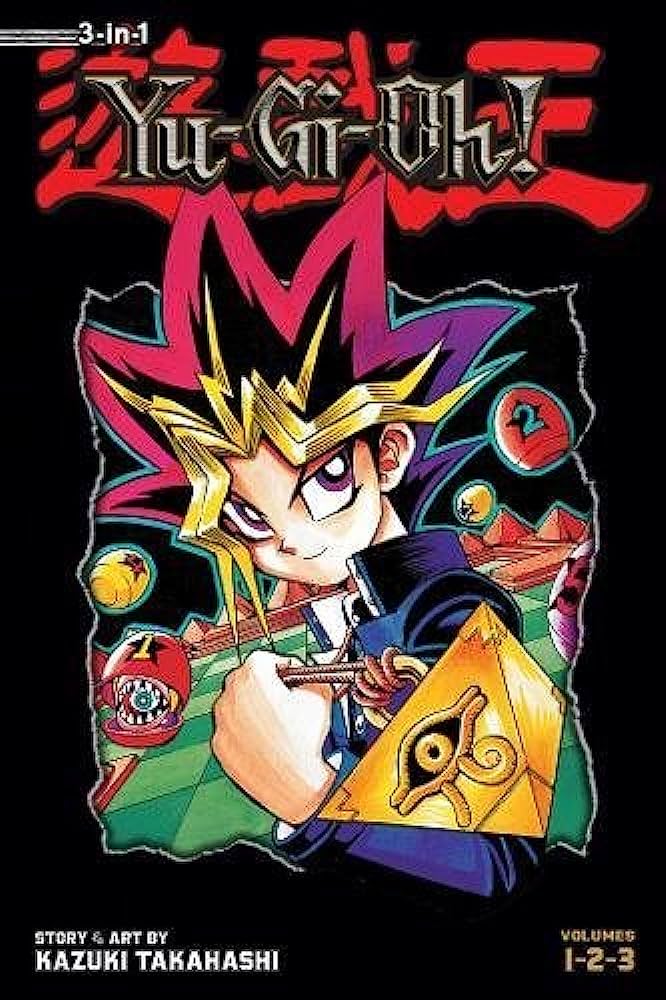So I've been rereading the original series (bought the first three of these 3-in-1 volumes so far) and thought I'd start a discussion around it. There's so much that could be talked about and I don't even know where to begin.
I don't think it's any surprise that the two chapters that introduced Seto Kaiba and Duel Monsters (Magic & Wizards as it's actually referred to at this point in the series) were so popular with readers at the time. "The Cards With Teeth (Part 1)" was the ninth chapter of the series and it has three major things going for it that I think helped really set it apart from what came before.
-It's the first chapter of the series to actually revolve around a game. All the other chapters up to this point featured Shadow Games that were loosely tied into whatever was happening, but those Shadow Games were always set up by Yami Yugi as a response to circumstances. The games were befitting of the people he was playing against, but they didn't exist outside the context of being Shadow Games. This chapter first introduces a game that's considered an established property and widely-played (at least in America at this time) game, shows off a bit of how the game is played, and then flips that game on its head by turning it into a Shadow Game at the very end and for all of Part 2.
-Talk about an evolution of art style. Probably the most detailed piece of art up to this point in the series for any non-human thing was the scorpion seen in chapter 8, "The Poison Man." But when the monsters come to life in this particular Shadow Game, they're so detailed compared to everything else that they stand out visually and feel otherworldly.
-Seto Kaiba was probably the most interesting one-off antagonist up to that point in the series because he already had the potential to be a great foil to Yami Yugi. Both are master game players in their own right, but Seto's arrogance and his willingness to cheat to stay on top plays perfectly opposite to the calm, cool confidence of Yami Yugi and his ability to work through a situation without resorting to cheating (even if some of the Shadow Games before this point are probably aren't fair to the other person, like Ms. Chono from chapter 7 "The Face of Truth" who isn't even aware she's playing a Shadow Game).
I'll be back for more manga discussion as I continue through the series. What are your thoughts? If you love the OG series but haven't read the manga... what are you doing, bud? Go out and read it, you're missing out.

I agree about enjoying the variety of games seen in the early manga. A core memory of mine from way back in 2002 was being a little kid picking up volume 3 of the manga -- first time I had ever held manga in my hands before -- and seeing things like Yugi and Mokuba playing Capsule Monster Chess, or the digital pet chapter where they're basically playing with Tamagotchi. And who can forget the criminally underused Dungeon Dice Monsters? That was a really cool concept for a board game.
Personally, my favorite part of the early manga is the Monster World arc introducing Bakura. Those chapters were the inspiration that pushed me to start working on my own tabletop RPG, something I'm still toying with to this day. To say that Takahashi's work was influential on myself and my interests and values would be an understatement.
You and me both! Monster World was fantastic. I really wish it had gotten another chance to shine. Yes, I know technically the Pharaoh's Memories Arc was playing Monster World, but we didn't see that for most of it. It was there more to explain how the story was being framed. Could have used more tabletop.
Which is saying a lot, because as someone who was invested in the lore and characters, I also wanted to actually have the story in the past and see what happened at the time.
I'm also an avid lover of tabletop RPGs. I liked them beforehand, which is probably why I so desired more chapters like them, but I do like the percentage based way the game was run. It was interesting. Also, the usage of a laptop to generate some of the outcomes suggests one might even be able to create a solo game with the system. Which would be great, because so often groups fall apart before the end of a campaign.
The percentage-based rolls were inspired by Call of Cthulhu, which was the most popular RPG in Japan at the time (D&D has only more recently overtaken it in popularity). I actually prefer CoC's d100 percentage rolls over d20 stuff, so seeing it in play in the manga was so cool. A solo game with that kind of system would be pretty interesting - hell, I just might have to try something like that for my own game. I'm not entirely sure how it would work, but you've given me some food for thought.
Oh, interesting!
I would probably require a slew of different tables. Maybe even a way to randomly set up a campaign? You might know how each can go, but you don't know which one you are starting with. Early places share the same encounter tables and general quests, but it becomes more specific as you go on.
Hell, after making something so complicated it would all be new. There is no way to remember all of that. Plus, if there was a template, people could make their own and share solo campaigns so people have something completely new.